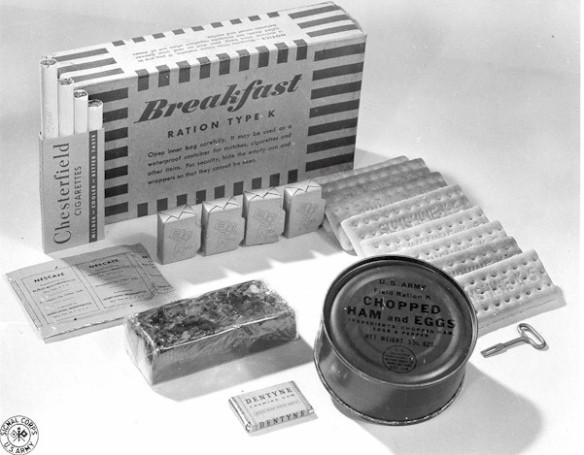The first post in this series explored colonisation, one of three formative forces in our food system. This post explores the impact of industrialisation.

Industrialisation
First up, let’s acknowledge that industrialisation has delivered massive benefits for humanity – the technology we enjoy, rail, road, sea, air and even space travel to name just a few. Is it possible that we can continue to enjoy the benefits of industrialisation while minimising its downside? I would like to think so.
New Zealand as a nation is less than 200 years old and our development parallels the growth of industrialisation. When Captain Cook travelled here in 1769 James Watt patented his steam engine – the first machine to have a significant impact in commerce. Jeremy Rifkin identifies three industrial revolutions, the first driven by steam, the second by oil, and the third by renewable energy.
In the 1860s the first railways began to connect the country. The famous SS Dunedin was a wind -powered ship, but its steam driven refrigeration system enabled us to deliver the first shipment of frozen meat to England in 1882. By then, steamships had started to appear too cutting a month off the long sea journey to England. Steam engines started to have an impact in food production from the 1860s with machines used initially for threshing grain.
Oil – the second industrial revolution
The second industrial revolution saw oil accelerate industrialisation and revolutionise food production in a variety of ways.
1. Mass production
Henry Ford’s 1920s revolutionary production line established a template for mass-production that was manifested here on the production line of freezing works. Farms became bigger as the machinery of industrialisation enabled the processing of meat. “The Meatrix” traces how this process led to the development of factory farming in the U.S. While we still have a lot of grass fed beef and sheep-meat, most of our chickens and pigs are farmed this way.
2. Processing for longevity
The two world wars were industrial wars, driven by oil, with the combatants’ industrial prowess ultimately determining the outcome. Wars can only be won when armies have effective supply chains, and these wars required massive supply chains, on a scale never seen before. War drives innovation. We flew into the Second World War in biplanes and flew out in jets. Innovation in supply chains was just as remarkable, if not so visible.
Tim Lang of The Guardian identifies this as the beginning of the end for farmer domination of the food system.
Until the second world war, it was the farmers who were the major players in food. But the end of farmer power began just when they thought they were at their most powerful – in the middle of the 20th century. After the war, they were given grants and subsidies, but these were merely to stop them collapsing altogether. They were supported but only so long as they restructured: in return for intensification, increasing efficiency and the adoption of labour-saving technologies in the form of agrochemicals, machinery and plant science.
Canned food became a staple in World War One and its production accelerated for the second, much larger war. The U.S. developed K-rations to provide food that was long-lasting and easy to transport.

A K-Ration breakfast from WWII – note the can of chopped ham and eggs (image from Wikipedia)
You can imagine how quickly the companies that produced these foods sought other markets when the war finished. If you want to see what products will appear in our supermarkets tomorrow, look at the innovations the military is working on now – for example, a sandwich that will stay fresh for two years.
Another innovation was DDT – the insecticide that caused the Second World War to be the first to have fewer people killed by diseases that bullets. Very quickly, other agrochemical innovations appeared, including 2,4,-D in 1944. You can imagine how quickly the agrochemical companies sought new markets when hostilities ceased.
Combined with the impacts of consumerism, industrialisation transformed our diets over the remainder of the century. The Green Revolution in the years from the 1930s to the 1960s that saw continued innovation that led to massive increases in agricultural production world-wide. But has it been successful?
The legacy of the industrial food system
The International Panel of Experts on Sustainable Food Systems released the report From Uniformity to Diversity: A paradigm shift from industrial agriculture to diversified agroecological systems. The report highlights the downside of the the industrial food system.
Today’s food and farming systems have succeeded in supplying large volumes of foods to global markets, but are generating negative outcomes on multiple fronts: wide- spread degradation of land, water and ecosystems; high GHG emissions; biodiversity losses; persistent hunger and micro-nutrient deficiencies alongside the rapid rise of obesity and diet-related diseases; and livelihood stresses for farmers around the world.
The impact on human health is a massive industrial food system report card fail, with the health of close to five billion of the world’s seven billion people not getting good health outcomes.

New Zealanders are impacted by these trends. To return to the question posed above, how we can continue to enjoy the benefits of industrialisation while minimising its downside?
The first post in this series explored the impact of colonisation on Māori. Have we all been colonised by the forces of industrialisation?
Part three of this series will explore the impact of consumerism on food evolution.

Dr. Vandana Shiva’s comments on The Green Revolution in India provide profound but disturbing insights that have wide ranging, direct parallels for NZ.
LikeLiked by 1 person
Pingback: Food evolution and health in Aotearoa, part three: Consumerism | Local Food Northland